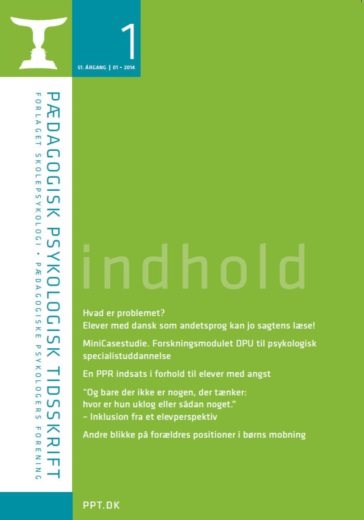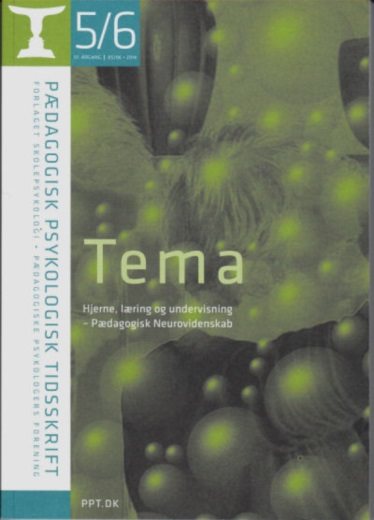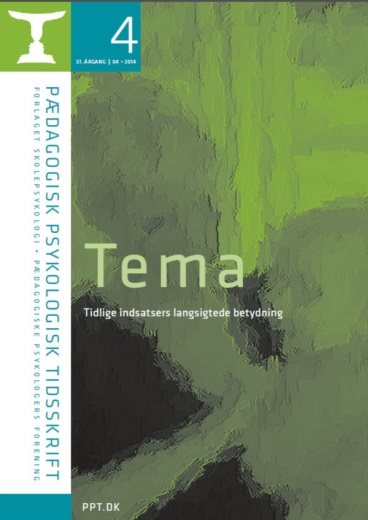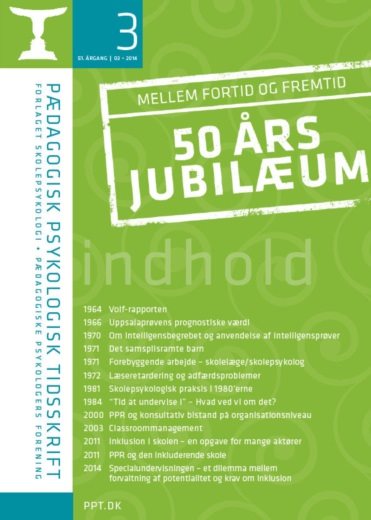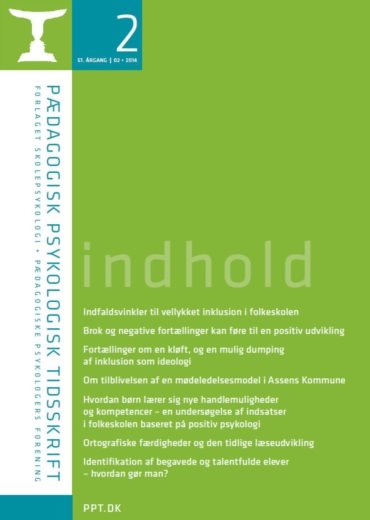Beskrivelse
Rønberg; Louise, Flensted. (MA in Logopedics, Phd student at the University of Aarhus). What is the Problem? Pupils with Danish as their secondary lan-guage can easily read. Pædagogisk Psykologisk Tidsskrift, 2014, Vol. 51, 1, 3-18 – Children with Danish as their first language scored higher than children with Dan-ish as their second language on measures of reading comprehension, vocabulary, and knowledge of text types, whereas no difference were found on measures of basic word reading abilities. The differences persisted, even when SES was controlled. However, when dividing children into two groups, with and without reading com-prehension difficulties, no differences were found when SES was controlled. Only the level of receptive vocabulary was statistically significantly below for children with Danish as their second language compared to children with Danish as their first language. Moreover, the study shows that for children whose first language was Danish difficulties with reading comprehension were more commonly related to basic difficulties with word reading, whereas for children speaking Danish as their second language, reading comprehension difficulties were more commonly re-lated to vocabulary and not to difficulties with basic word reading. Implications for practice are discussed. – Louise Flensted Rønne
Smitshuysen; Anna, Bohn (Psychologist). To What Extent is it possible to test learning difficulties of two children with Cerebral Palsy? Pædagogisk Psyko-logisk Tidsskrift, 2014, Vol.51, 1, 19-32. – The problem will be illustrated by two normal functioning children with neonatal Cerebral Palsy.
The objective with this case study is to show how school psychology with its main purpose: Evaluation of school standings and recommendation of special educational actions – also can provide a neuropsychological understanding, which makes sense and a positive difference to make parents and schools understand and facilitate the needs of the students before start of school.
The psychological test flow of the case study consists of a cognitive test with: RIAS, WPSSI-R, some part tests Nepsy and the questionnaires: BRIEF, 5-15 and CBCL. There are no proofs of specific learning disabilities in the two cases of the study.
Through the questionnaire the children’s psychosocial challenges and fragile ex-ecutive functionality was proven. The children’s reaction patterns are described: One child exhibits uneasy and externalizing behavior, and the other child exhibits an overly controlled and internalized behavior. Both children tire faster than peers mentally and physically. It has been tried to evaluate and describe the case study
children dynamically through the psychological evaluation. The conclusion of the study is firstly, that no learning disabilities were found at the start of school. Sec-ondly that a psychological evaluation, which makes use of neuropsychological knowledge, can provide an understanding of the brain damage in a developmental perspective, that can contribute to the right support and compensation for the chil-dren by start of school.– Anna Bohn Smitshuysen.
Mejdal, Jytte . (Psychologist in Odense). A School Psychological Endeavour To-wards Pupils With Anxiety. Pædagogisk Psykologisk Tidsskrift, 2014, Vol.51, 1, 33-45. – The article describes a municipal project that has sought to prevent normal anxiety, common in the development of children and young people, from slipping into psychopathology .Four psychologists in PPR, a pedagogical psychological con-sulting function, have tested an endeavour aimed at pupils from the 1st to 6th grades who suffer from anxiety. The procedure has was based on a combination of con-sultative methods and cognitive behavioural therapy. The article employs knowled-ge of these two methods and discusses the effect of combining them. – Jytte Mejdal.
Szulevics, Thomas; Frederiksen, Tine; Gregersen; Stine, Bjerg; Hansen: Karoline, Winther; Lodahl; Hanna, Rosenlund; Nørgaard, Vibe; Pedersen; Christina, Glad. (Psychologists). If only Nobody thinks that she is dumb or Something. – Inclusion from a Pupil Perspective. –Pædagogisk Psykologisk Tidsskrift, 2014, Vol. 51, 1, 46-59 – The aim of the present paper is to investigate inclusion from a student perspective. In 2012, the Danish legislation on special education was chan-ged. The change signaled a tightening of the concept of special needs education. As of the new legislation, students who attend special needs education for less than 12 hours weekly are no longer formally considered special needs students. Furthermo-re, many of the students who were formerly in special education are being included in regular education. Based on a small-scale empirical project in a Danish munici-pality, this paper analyses inclusion from the perspectives of 10 students who have made the transition from special to regular education. – Thomas Szulevicz and others.
Hein, Nina (Psychologist, PhD). A New Look at the Position of Parents in Bul-lying among Children. – Pædagogisk Psykologisk Tidsskrift, 2014, Vol.51, 1, 60- 74 – How can we understand parents’ agency in childrens’ bullying in school?If we look into the international research literature we find a field dominated by the per-spective that bullies and victims of bullying in school have different typical pro-blems at home that can explain their behavior. Parents’ strategies of upbringing, the way they relate to their children and the general atmosphere at home, are view-ed as the breeding ground for children’s behavior as either bullies or victims at school. In my research into parents’ positions in children’s bullying, I have taken another starting point. Based on an interest in parents’ experiences and perspec-tives of having a child who is being bullied at school, I have looked into parents’ possibilities of helping their victimized child. By means of analyses of a varied em-pirical material consisting in part of interviews with parents, schoolteachers and –principals, as well as of a range of public documents concerning bullying, parents’ responsibilities, the purpose of school, etc., my research project contributes to the field with new and different insights. The overall point is that parents’ possible im-pact on children’s social behavior at school cannot be understood as a causal con-nection, but must be seen as a complexly entangled matter involving a range of other forces at local, societal and political levels. This article outlines the explorato-ry process of the research project and roughly presents the new insights and analy-tical perspectives gained. – Nina Hein.
